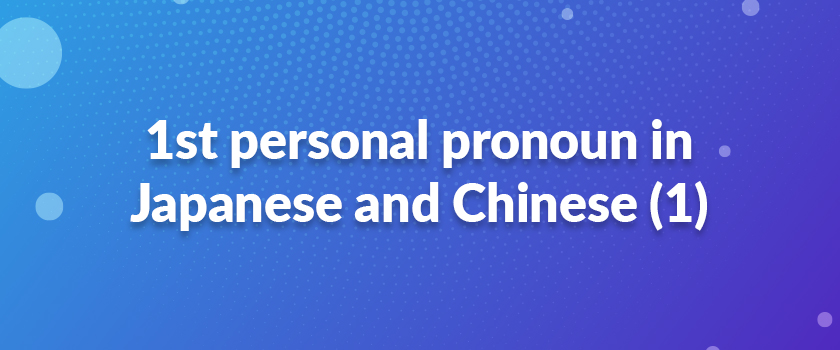When we translate Japanese to Chinese, we usually find that the personal pronoun in the two kind of language cannot be one to one correspondence completely, so it is easy to make a mistake if we didn’t pay much attention.
The translation of personal pronoun between Japanese and Chinese seems a little difficult for a freshman. Sometimes we should translate it out while in some occasions there is no need to translate it. Even we knew that we must transfer it in to Chinese, but it also seems a little confounded for us. In my opinion, it may because there are so many personal pronoun expressions in Japanese and also various in Chinese. So when we translate personal pronoun, we should make sure that which one is more suitable to express the meaning. That means we should choose one word from a package of personal pronoun.
According to the 1st person, 2nd person or 3rd person, personal pronoun in both of the Japanese and Chinese are divided in to 3 kinds.
In Japanese, 1st personal pronoun expression are decided in the basis of the gender in some cases. For example, when the speaker is male, he will use the words of “おれ、ぼく” more often than other expressions. On the contrary, if the speaker is female, she will use the words of “あたしく、あたし” more frequently. Of course, there also exist some other expressions, for example, “わたし、わたしく、われわれ、わたしたち” and so on. These words have no tendency whether you are a male or female.
Read Also: Sentences which are easily wrong translated into Chinese
In contrast, the 1st personal pronoun expressions are not so rich and varied compared to Japanese. In Chinese, we usually use the words of “我,我们” , of course irrespective of sex. At times, we say “俺”, but this word seems not so formal and is common in spoken language.
Therefore, it is hardly to say which one of personal pronoun in Japanese is equal to one word in Chinese, or which one of personal pronoun in Chinese is equal to one word in Japanese.
Take a look at how we helped our client by localizing their project for Chinese language. Click here to read the complete case study









